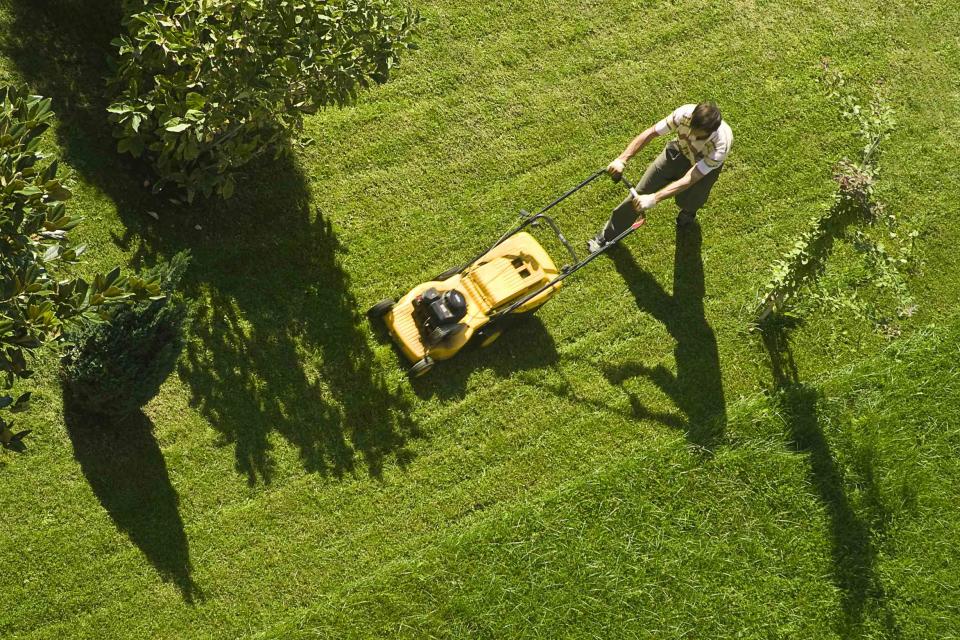5 Common Lawn Care Mistakes Almost Everyone Makes
The grass can be greener!

delihayat/Getty Images
There’s nothing like coming home to a green and verdant lawn. It’s the ultimate in curb appeal. However, even if you put a great deal of thought into planning and caring for your lawn, it’s easy to overlook a few things. While seemingly minor, these oversights can make the grass look less than lush. Here are five common lawn care mistakes almost everyone makes, along with how to fix them.
Related: 10 Spring Lawn Care Tips to Get Your Yard Ready for Summer
Using Dull Mower Blades
Maintaining a lawn can be a lot of work and sometimes we forget to do the simple but important things like sharpening mower blades. Matthew Koch, Ph.D., Director of Biotechnology, Genetics, and Seed at Scotts, tells me mowing with a dull blade can shred grass blades, causing increased stress that can harm the grass, increase water loss, and promote disease. Fortunately, this is an easy fix. He advises sharpening your blades every year. Schedule this on your calendar at the beginning of the season, so you don’t overlook this one.
Reactive Lawn Care
According to Koch, one of the biggest mistakes he sees people making is not being proactive with lawn care. “According to a recent Harris Poll survey commissioned by Scotts, 81 percent of homeowners practice preventative maintenance for their vehicle and 66 percent do so for skincare, while only 56 percent do the same for their lawn,” he explains. “Products and treatments for lawns are most effective when they are applied before problem areas pop up and lawn disease strikes. Depending solely on reactive care and maintenance after your lawn shows signs of disease is a key mistake that can lead to the downfall of a healthy lawn.”
Overwatering
Because many of us fear underwatering our lawns—especially if we don't live in particularly rainy climates—we end up overwatering. “Too much water can lead to shallow root growth and promote the growth of fungi and diseases,” says Koch.
To prevent this problem, he advises deep but infrequent watering. “Watering deeply but infrequently will allow the soil to dry out between watering sessions, which will reduce the risk of disease and fungi and promote deeper grass root growth. In the case that overwatering occurs, let the soil dry and consider aerating. This can improve drainage and root growth by allowing air, water, and nutrients to penetrate more easily.”
Related: Beautiful, No-Mow Alternatives to a Grass Lawn
Ignoring Bare Patches
While you might think a bare patch in your lawn is no big deal, that couldn’t be further from the truth. Koch tells me, “Bare patches in the lawn are not only unsightly but also provide opportunities for weeds to take hold. The open spaces provide an opportunity for weeds to germinate and establish themselves without competition from grass.”
This can lead to weeds colonizing those empty spots and spreading throughout your lawn—creating an even bigger problem. So he recommends overseeding bare patches to encourage grass growth and prevent weed infestations.
Neglecting Seasonal Maintenance
Different seasons and climates require different lawn care practices. “Failing to adjust your lawn care routine based on the time of year can result in a less-than-optimal lawn,” explains Koch.
He suggests making seasonal plans. “For example, in the winter, you may want to focus your attention on planning for spring as opposed to applying any product or seed. In the fall, it’s best to get outside to fertilize and clean up debris.”
For more Real Simple news, make sure to sign up for our newsletter!
Read the original article on Real Simple.

